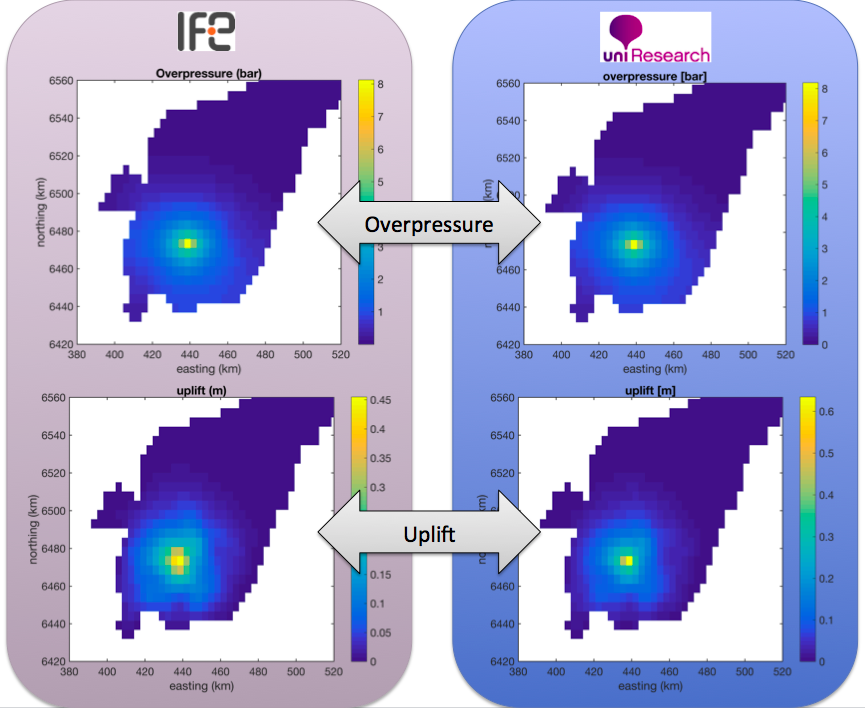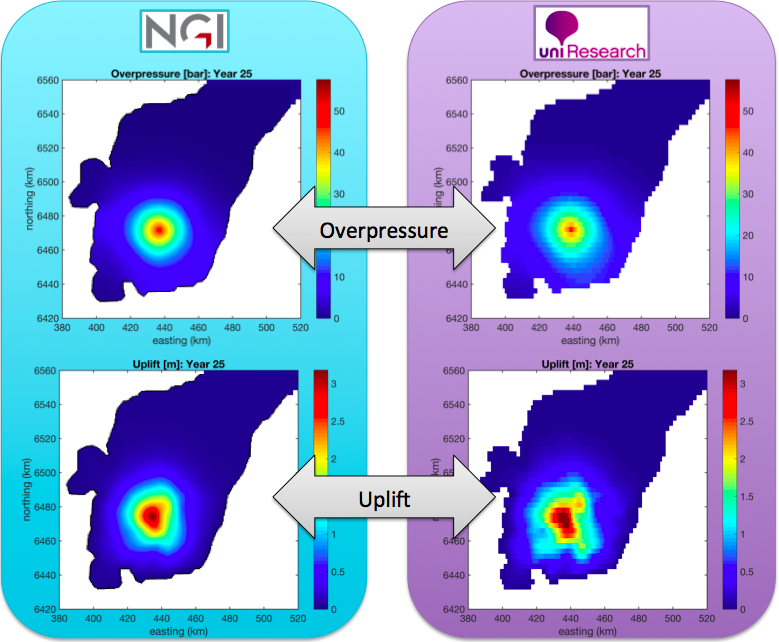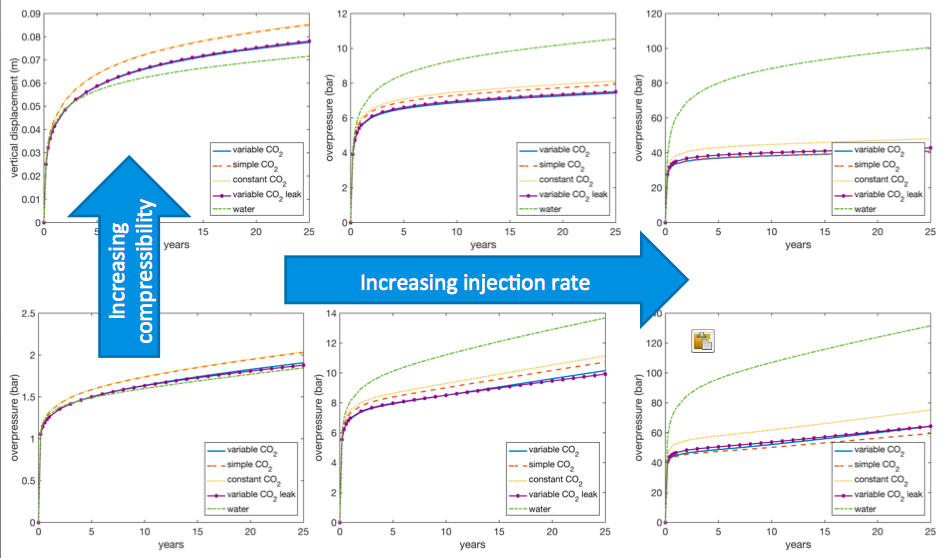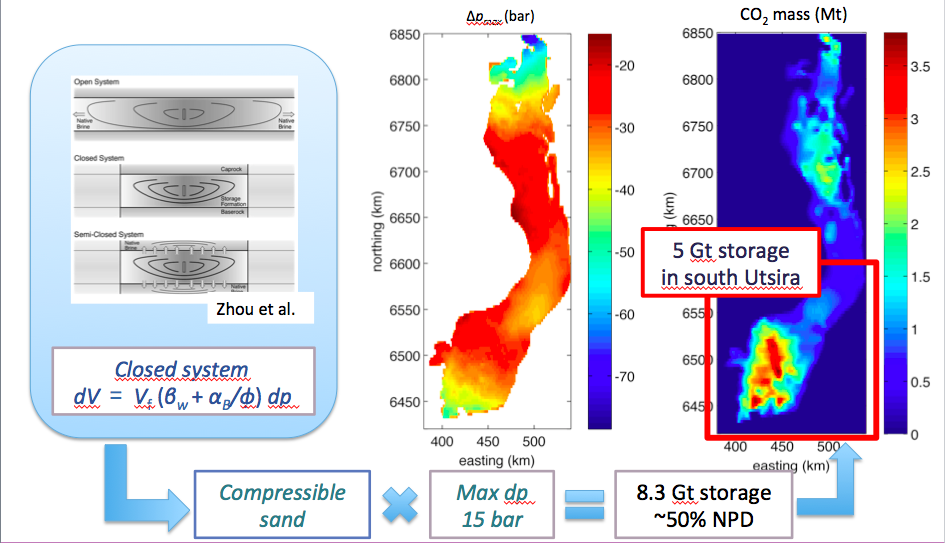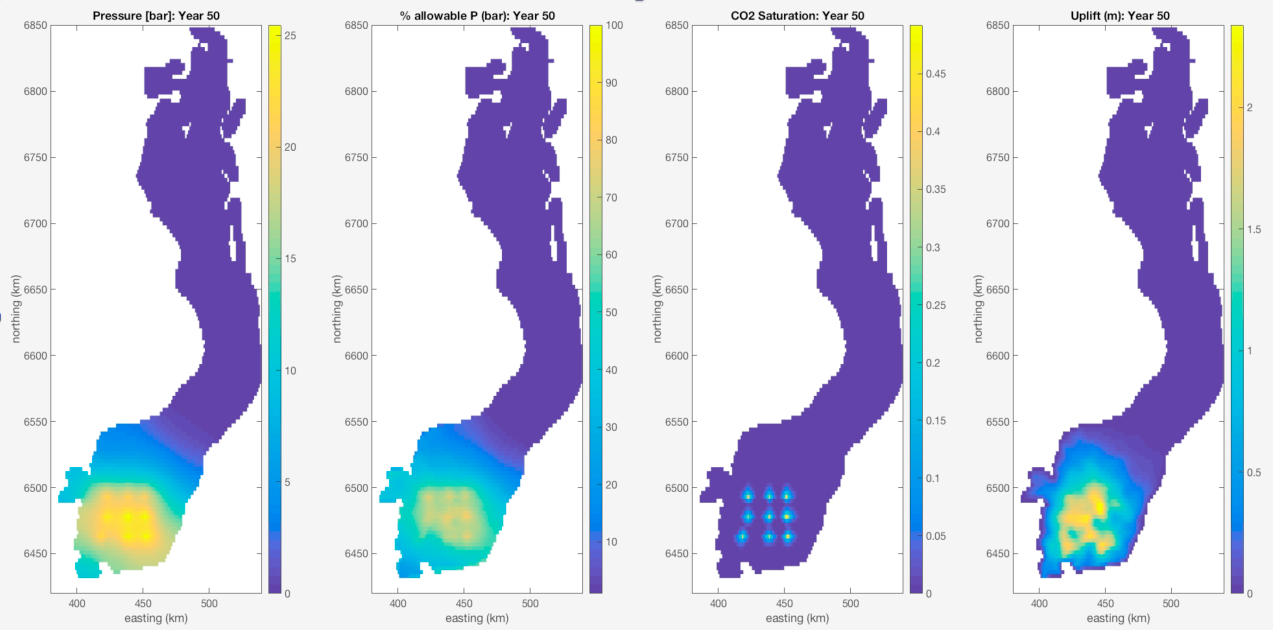Integration of laboratory/field data and modeling activities are essential for managing storage integrity in realistic settings. Benchmark studies are valuable tools for understanding the impact of uncertainties on predictions for migration and storage security, but very little has been done for geomechanical problems related to CO2 storage. We propose an integrated geomechanics benchmark study to investigate relevant scenarios for caprock integrity—e.g. understanding acceptable reservoir pressure, modeling leakage scenarios with remediation, and concurrent injection operations. In making a comparison of simulation tools from each of the participating partners, we can explore how different model approaches and couplings lead to different predictions, which will give important insights for the modeling community and potential users. Results will indicate which kind of observational data are needed to constrain model uncertainty.
The problems will be designed based on processes studied in WPs 1-3, while realistic aquifer geometries from the Norwegian CO2 Storage Atlases will be used whenever appropriate.
Results
A benchmark study was developed to compare the large-scale models that have been developed within WP3. The entire Utsira formation was used as the benchmark problem, and the comparison focused on large-scale pressure development and deformation. The comparison was successful and showed the impact of modeling choices on the simulated pressure and deformation.
The second task was integration of data into a large-scale injection problem to investigate the pressure-limited capacity of the Utsira formation. Simulations predict the 8.3 Gt CO2 storage in the Utsira for a closed system without water production.
4.1 Benchmark study: The objective of this study was to build confidence in different complexity simulators to predict pressure and deformation for large-scale CO2 injection. Three simulators were compared (details of simulators described in WP2) for a single-well injection into the southern Utsira at different rates for 25 years. Compressibility of the Utsira sand was varied between stiff and soft values to reflect a realistic range for unconsolidated sand. A summary of the results can be found in “ Model comparison for geomechanical simulation of large-scale CO2 storage (158 downloads ) “.
The main differences between the simulators were that the IFE model is only single-phase water injection, the Uni model solves deformation analytically, and the NGI model solves the full problem with constant CO2 properties. The results show that the models compare very well for the simplest problem of water injection. However, when comparing for CO2 injection, the single-phase model overestimates the pressure build-up and subsequent deformation. The discrepancy in model predictions becomes progressively worse with higher injection rates and stiffer media. Constant vs variable CO2 properties also has a significant impact, but only for large injection rates.
4.2 Pressure-limited capacity of the Utsira Sand: Analytical evaluation of pressure-limited capacity provides a rough estimate of CO2 storage capacity for a maximum 15 bar overpressure that can be sustained in the shallowest portion of the reservoir. The estimate for a closed aquifer with no water production gives a storage capacity of 8.3 Gt, of which 5 Gt are in the southern Utsira. This estimate assumes the GEUS measured compressibility for the unconsolidated Utsira sand.
Simulations were performed with the VESA simulator to verify that injection pressures can sustain 5 Gt injected into the southern Utsira over a 50-period with a 1000 years post injection. The results show that the Utsira can withstand 100 Mt/y CO2 injection without water production. The plume is trapped residually within 200-300 years after injection. Uplift at the sea floor can be expected to reach 3 meters. See full movie here (click on full screen for best viewing):
VESA simulation results (movie) for 50 years of 100 Mt/y CO2 injection into the Utsira with 1000 years post-injection
